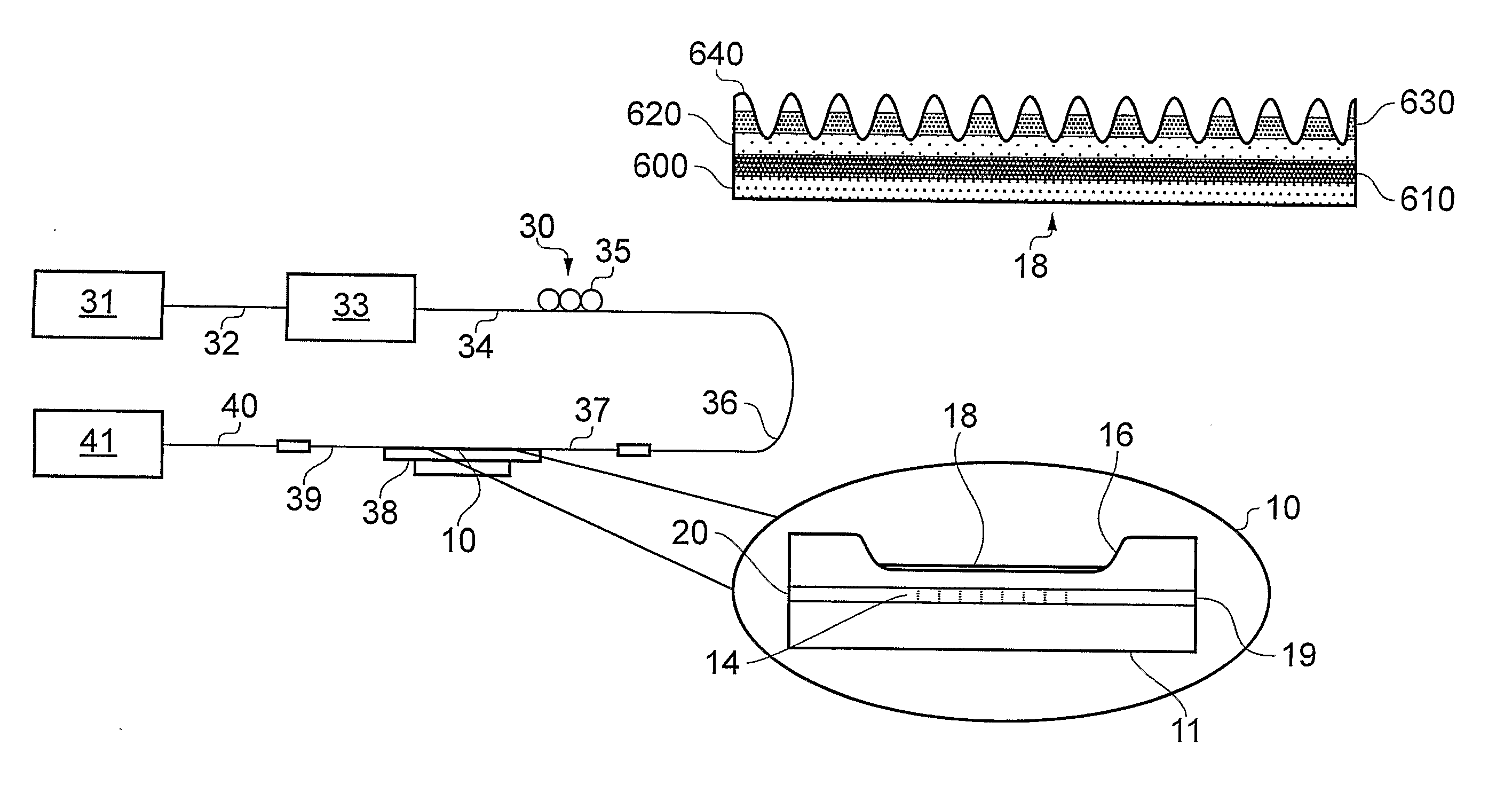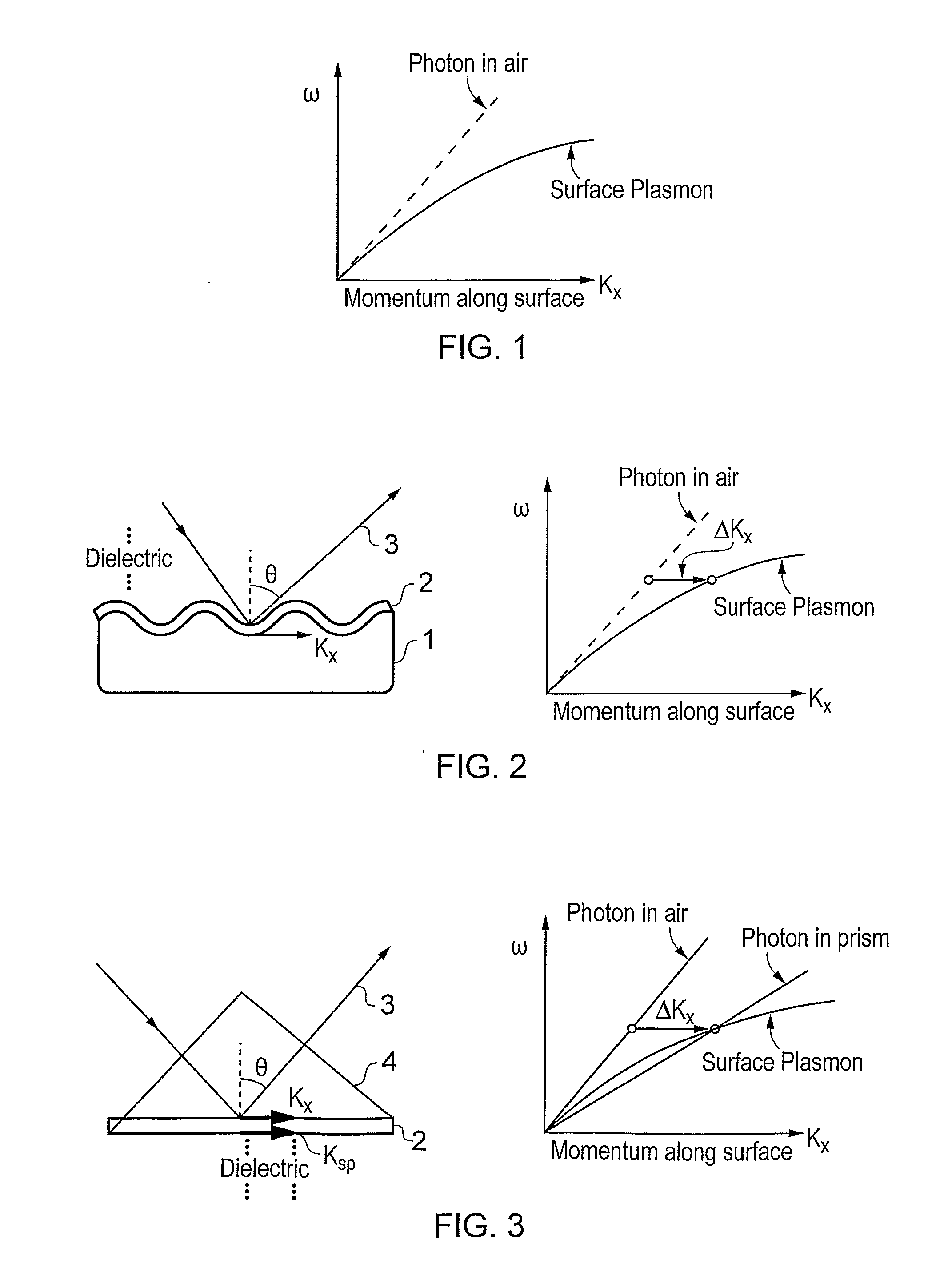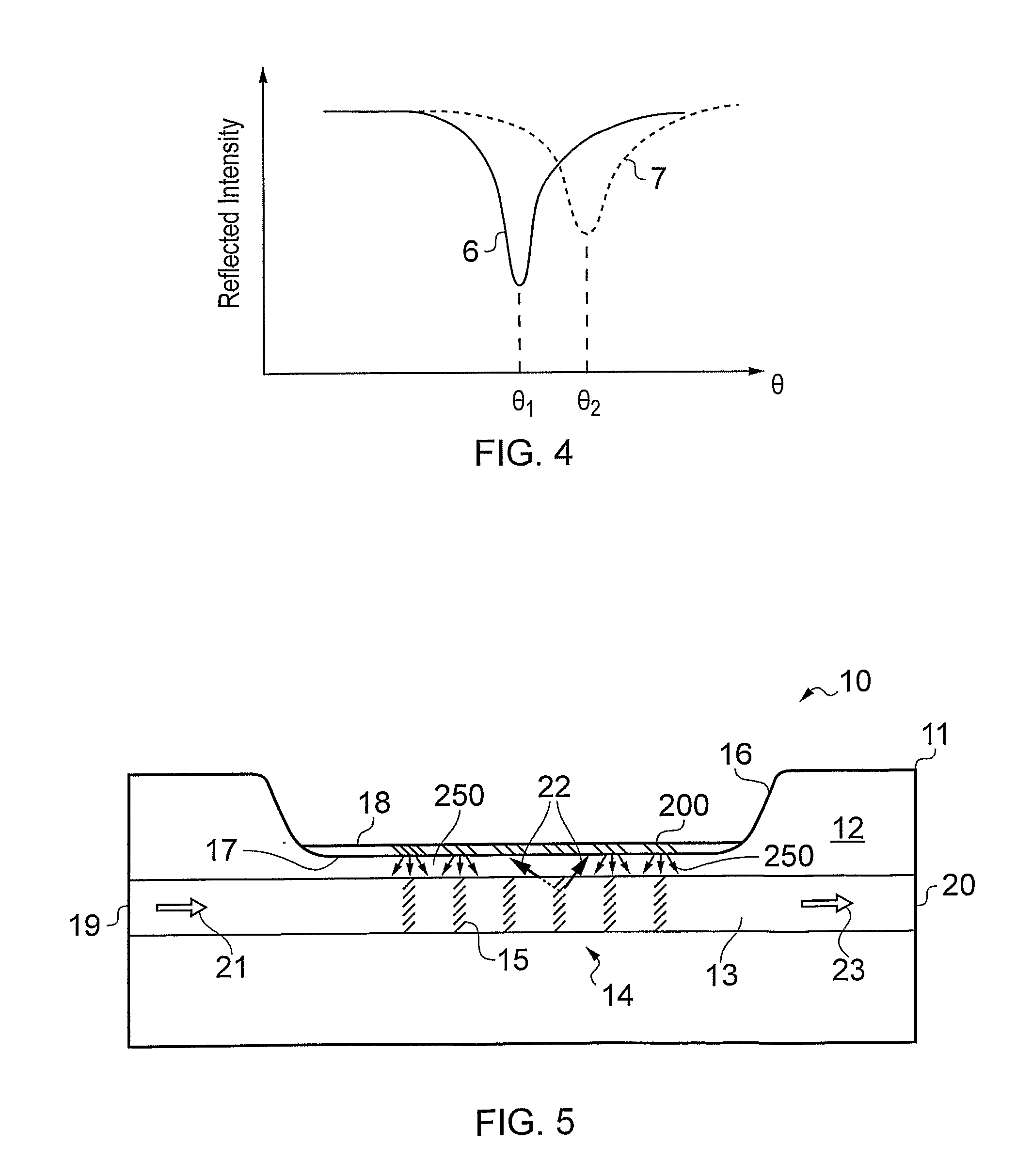Method of Producing a Surface Plasmon Generator, a Surface Plasmon Generator and a Sensor Incorporating the Surface Plasmon Generator
a surface plasmon and generator technology, applied in the field of surface plasmon generation, can solve the problems of in-prism reflected light loss, two cannot couple or “transform” between each other, and require bulky and cumbersome prisms, so as to reduce the space required by the surface plasmon generator, reduce stress, and enhance penetration of guided electromagnetic energy.
- Summary
- Abstract
- Description
- Claims
- Application Information
AI Technical Summary
Benefits of technology
Problems solved by technology
Method used
Image
Examples
Embodiment Construction
; FURTHER OPTIONS AND PREFERENCES
System Overview
Referring to FIG. 5 there is schematically illustrated, in cross section, an example of a surface plasmon generator 10 according to an example of the present invention.
The surface plasmon generator includes a length of optical fibre 11 having an optical signal input part 19 comprising an open end of the optical fibre length arranged for receiving optical signals into the optical fibre, and an optical output part 20 comprising an open end of the optical fibre from which output optical signals can be received from the optical fibre.
The optical fibre has an optical fibre core part 13 clad by an optical fibre cladding 12. The diameter of the core part, and the dimensions, structure and design of the optical fibre as a whole, are such as to render the optical fibre a single-mode optical fibre in respect of optical signals having a wavelength in excess of about 1000 nanometres (as measured in vacuum).
The cladding part of the optical fibre is...
PUM
| Property | Measurement | Unit |
|---|---|---|
| refractive index | aaaaa | aaaaa |
| wavelengths | aaaaa | aaaaa |
| skin depth | aaaaa | aaaaa |
Abstract
Description
Claims
Application Information
 Login to View More
Login to View More - R&D
- Intellectual Property
- Life Sciences
- Materials
- Tech Scout
- Unparalleled Data Quality
- Higher Quality Content
- 60% Fewer Hallucinations
Browse by: Latest US Patents, China's latest patents, Technical Efficacy Thesaurus, Application Domain, Technology Topic, Popular Technical Reports.
© 2025 PatSnap. All rights reserved.Legal|Privacy policy|Modern Slavery Act Transparency Statement|Sitemap|About US| Contact US: help@patsnap.com



